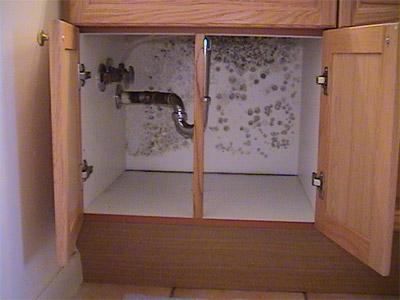Hidden mold isn’t always easy to see. In fact, by the time visible spots appear, a much larger problem could already be growing behind your walls, under flooring, or inside HVAC systems. Catching hidden mold early is critical for protecting your home, health, and wallet. Here’s how to spot the warning signs before it spreads.

1. Follow Your Nose: Musty Odors
One of the earliest signs of hidden mold is a persistent musty smell, even when your home looks clean. Mold produces microbial volatile organic compounds (mVOCs), which give off a damp, earthy odor. If you notice this smell in specific rooms, basements, or bathrooms, it’s worth investigating further.
2. Watch for Health Symptoms
Hidden mold in your home can trigger health issues even if you don’t see visible growth. Common symptoms include:
- Sneezing, coughing, or congestion
- Worsening asthma or allergies indoors
- Eye, nose, or throat irritation
- Unexplained fatigue or headaches
If these symptoms improve when you leave the house but return when you’re home, mold may be the culprit. The CDC notes that mold exposure can impact people differently, especially those with allergies, asthma, or weakened immune systems.
3. Look for Moisture Problems
Mold thrives in damp conditions. Be on the lookout for:
- Water stains on ceilings or walls
- Peeling paint or bubbling wallpaper
- Warped or buckled flooring
- Condensation on windows
Even small leaks or minor water damage can create the perfect environment for hidden mold growth.
4. Check Hidden Areas
Some of the most common spots for hidden mold include:
- Under sinks and behind cabinets
- Around windows and door frames
- Inside HVAC ducts
- Behind drywall near plumbing
- In attics, basements, and crawlspaces
These areas often go unnoticed until mold has spread extensively. The EPA recommends checking these damp, enclosed spaces regularly to reduce the risk of serious infestations.
5. Don’t Rely Only on What You Can See
Surface cleaning might make mold disappear temporarily, but it doesn’t address what’s growing beneath. Professional mold testing and inspection can identify hidden mold and determine the extent of contamination so the root cause can be fixed.
Take Action Before Mold Spreads
Hidden mold won’t go away on its own — and the longer it’s left untreated, the harder and more expensive it becomes to remove. If you notice musty odors, unexplained health symptoms, or signs of moisture in your home, consider scheduling a professional mold inspection. Identifying the problem early helps protect both your home and your health.
